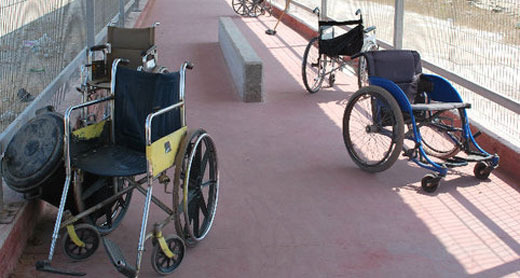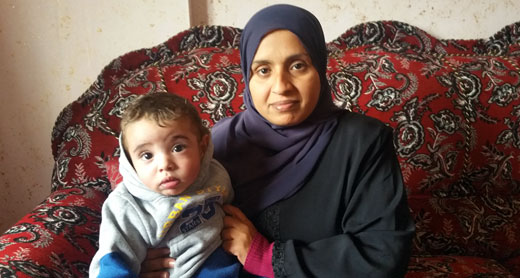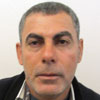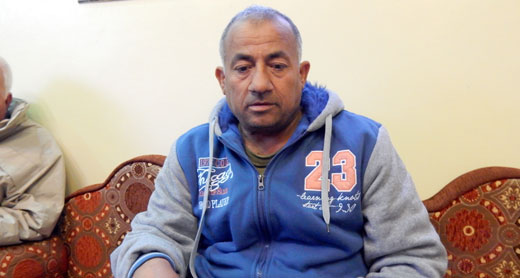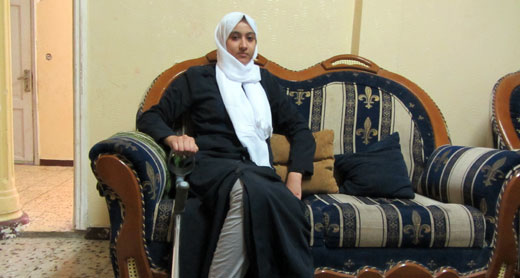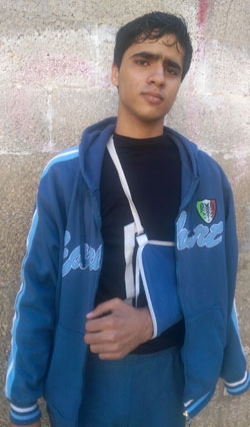مرگ مادر بهکیش (نیره جلالی مهاجر) و سیل تسلیت ها و یادواره هایی که عده بیشماری از او کردند، من را بر آن داشت تا به یاد او و گرامی داشت تلاشهای او برای دادخواهی و روشن شدن حقایق جنایت های رژیم جمهوری اسلامی در دهه شصت، این مطلب را بنویسم. مادر بهکیش از سال ۱۳۶۰ که جگر گوشه اش محمد رضا در خیابان به دست پاسداران جمهوری اسلامی به گلوله بسته شد، می پرسد چرا و به کدامین گناه؟ او نیمی از زندگی خود را در جلوی درهای زندان های شاه و جمهوری اسلامی گذرانید و هرگز از حق خود برای دانستن و روشن شدن حقایق نگذشت. او دادخواهی و مجازات عاملین این جنایت ها را جزو حقوق عدالت خواهانه خود می دانست و تا آخرین لحظه برای رسیدن به این حق مسلم مبارزه و تلاش کرد. انسانیت و محبت در این زن موج می زد. بیهوده نیست که پنج فرزندش جان خود را فدای سرزمینشان کردند، عشق ورزیدن و انسان بودن را از مادر آموخته بودند.
جمهوری اسلامی با براه انداختن انقلاب فرهنگی و بستن دانشگاه ها در فروردین ماه سال ۱۳۵۹ دو هدف را دنبال می کرد. اول وحدت حوزه و دانشگاه و اسلامی کردن همه دروس علمی (بخصوص دروس علوم انسانی) و دوم محدود کردن فعالیت های سیاسی و تحت فشار قرار دادن گروه هایی که مخالف قدرت گرفتن آخوندها و برقرای خلافت اسلامی و ولایت فقیه بودند. همه گروه های سیاسی که بعد از انقلاب سال ۵۷ تاسیس شده و یا جان تازه ای گرفته بودند، در داخل دانشگاه ها، مرکز فعالیت، گردهم ایی، و عضو گیری داشتند. نیروهای چماق بدست و تا دندان مسلح رژیم به دستور خمینی و همکاری بنی صدرها و سروش ها به دانشگاه ها یورش برده و با زور دانشجویانی را که در اعتراض به بسته شدن دانشگاه ها در داخل آن تحصن کرده بودند بیرون کرده، عده ای را کشته و تعداد زیادی را مجروح کردند. بعد از دانشگاه ها نوبت به تظاهرات گروه های مخالف و حمله به دفاتر سازمان های سیاسی در درون شهرها رسید. جمهوری اسلامی به سرعت حلقه فشار و سرکوب را تنگ و تنگتر کرده و هر صدای مخالفی را در گلو خفه می کرد. جوانانی که در انقلاب سال ۵۷ به امید رسیدن به آزادی و دمکراسی شرکت کرده بودند، به زودی دریافتند که نظام تازه تاسیس از حکومت شاه سفاک تر و بی رحم تر است. اگر شاه فقط ارتش و اسلحه داشت، اما آخوندها علاوه بر نیروهای نظامی، با تسلط بر دین و ایمان مردم، عده زیادی هوادار حزب الله ای و جان برکف به پشتیبانی خود داشتند که خالصانه در راه امامشان جان فشانی کرده، و کورکورانه هر دستوری را برای رفتن به بهشت و عاقبت بخیر شدن اجرا می کردند. در آن روزهای سیاه جوان بودن جرم بود، چرا که هواداران جمهوری اسلامی احتمال می دادند که آنان سمپات گروه های سیاسی باشند. رژیم راهها را کنترل می کرد و از داخل ماشینها و اتوبوسها، بخصوص اتوبوسهای مسافربری که به شهرهای مختلف سفر می کردند، جوانها را شکار کرده به زندان می برد، تحت شکنجه قرار داده و اعدام می کرد. هیچکس امنیت جانی نداشت، و هیچ نهادی به مردم پاسخگو نبود، هرکه را که می یافتند دستگیر، شکنجه و آزار می کردند و هر اعتراضی را هرچند کوچک با سرب داغ پاسخ می دادند.
در چنین جوی، سیامک اسدیان (اسکندر) داماد خانواده بهکیش ها (همسر زهرا بهکیش) که فعالیت های سیاسی اش را از سال ۱۳۵۲ در کنار حمید اشرف شروع کرده، در جریان انشعاب سازمان فداییان به شاخه اقلیت پیوسته بود، مجبور شد مجددا اسلحه به دست گرفته و به مصاف رژیمی برود که مصمم بود همه گروه ها و جریان های سیاسی را تار و مار کرده و مخالفی باقی نگذارد. در ۱۳ مهر ماه سال ۱۳۶۰ سیامک اسدیان در حالی که همراه با مسعود بربری و علی رضا صفری از تهران عازم شهر آمل بود، بوسیله نیروهای امنیتی شناسایی شد و در درگیری مسلحانه با رژیم همراه با رفقای خود جان باخت. او در هنگام مرگ تنها ۲۶ سال داشت و عمر کوتاهش همیشه در فرار و گریز از دست ماموران ساواک و جمهوری اسلامی گذشت. همسرش زهرا بهکیش بهمراه عموی سیامک به آمل رفته و جسد او را تحویل گرفتند. بیش از شش ماه نبود که زهرا و سیامک ازدواج کرده بودند، و حالا زهرا باید جسم بی جان همسرش را تا لرستان همراهی می کرد. در مراسم چهلم سیامک در روستای گرزگل در لرستان پاسداران جمهوری اسلامی منطقه را محاصره کرده و عده زیادی از اعضا و هواداران سازمان فدائیان خلق-اقلیت را که برای شرکت در مراسم ختم سیامک به لرستان آمده بودند دستگیر کردند. از جمله این افراد می توان از توکل اسدیان، نورالله اسدیان، محمد حسن بهادری طولابی، حمیدرضا بصیری مقدم، عبدالرضا نصیری مقدم، اصغر حسینی چگنی، حکمت کردستانی، جواد شریفی، محمد حسن آزادی و امید ویس کرمی نام برد، این افراد همگی بعد از شکنجه های فراوان اعدام شدند(۱).
محمد رضا بهکیش (کاظم) متولد سال ۱۳۳۴، از دوران شاه فعال سیاسی و هوادار سازمان فداییان بود. بعد از انقلاب به فعالیت های خود ادامه داده و در جریان انشعاب سازمان فداییان به شاخه اقلیت پیوست و از کادرهای اصلی آن بود. محمد رضا در ۲۳ اسفند سال ۱۳۶۰ و در جریان یک یورش گسترده به سازمان اقلیت، در خیابان، بدون اینکه مسلح باشد به گلوله بسته شد. محمد در هنگام مرگ ۲۶ سال داشت و عمر کوتاه خود را چه در زمان شاه و چه در زمان جمهوری اسلامی در خانه های تیمی، و در فرار و گریز از دست ماموران رژیم های استبدادی گذرانید.
زهرا بهکیش (اشرف) متولد سال ۱۳۲۵، دارای فوق لیسانس دررشته فیزیک بود. او در زمان شاه چند سالی تدریس کرده، اما در سال ۱۳۵۳ بدلیل فعالیت های سیاسی اش برعلیه استبداد شاهنشاهی از تدریس محروم شد. زهرا همیشه نگران بود که شاگردانش گرسنه اند و بیشتر درآمد خود را خرج آنها میکرد. بزودی زهرا به دلیل فعالیت هایش بر علیه شاه مجبور شد تا با برادرش محمد رضا مخفی شده و در خانه های تیمی زندگی کند. بعد از انقلاب و در جریان انشعاب درونی سازمان فداییان، زهرا به اقلیت پیوست و آخرین مسئولیتش سازماندهی تشكیلات محلات تهران بود. ماموران رژیم در شهریور ماه سال ۱۳۶۲ به محل مسکونی او یورش برده، و زهرا با خوردن قرص سیانور اقدام به خودکشی کرد، تا زنده به دست پاسداران جمهوری اسلامی نیفتد. او در هنگام مرگ ۳۷ سال داشت و همه زندگی خود را وقف مبارزه در راه احقاق حقوق محرومان جامعه کرده بود.
محسن بهکیش متولد سال ۱۳۴۱، از فعالین سازمان دانش آموزان پیشگام در مشهد بود. در سال ۱۳۵۹ دیپلم گرفته و در جریان انشعاب به سازمان اقلیت پیوست. او در شهریور سال ۱۳۶۰ وادار به مخفی شدن گردید. محسن در سوم شهریور ۱۳۶۲ در كرج دستگیر شد و حدود یک سال و نیم در زندان بود، تا در فروردین ۱۳۶۴ ملاقات او را لغو كردند. ماه بعد وقتی خانواده محسن برای ملاقات او به زندان اوین رفتند، پدرش را احضارکردند تا به داخل زندان برود. دادیار زندان اوین به وی گفته بود که پسرش را محاكمه كرده و به دلیل جرایم سنگین او را اعدام كرده اند. به پدر بهکیش میگویند كه حق ندارد مراسمی بگیرد. با تحقیری ناروا به او گفتند كه پسرش بر ضد اسلام و حكومت اسلامی چنین و چنان كرده است. میدانستند پدربهکیش مومن است و میخواستند تا در او احساس گناه را تقویت كنند. او را تحت فشار قرار دادند تا احساسات خود را پنهان نماید. تهدید، تحقیر و تمسخر مهمترین وجوه مشخصه رفتار زندانبانان با خانواده زندانیان در آن سالها بود. محسن در هنگام مرگ فقط ۲۳ سال داشت.
محمد علی بهكیش متولد سال ۱۳۴۳، و هوادار سازمان فدائیان بود. او هم در جریان انشعاب به اقلیت پیوست و در شهریور ۱۳۶۰ بعلت تعقیب مداوم ماموران رژیم مجبور شد از خانه متواری شود. در دوم شهریور ۱۳۶۲ در خیابان و در سر یك قرار دستگیر شد. در جریان دستگیری او را شدیدا شكنجه كردند. روز بعد از دستگیری، محمد علی را با پاهای خون آلوده از شلاقهای تعزیر برای جست و جوی خانه و دستگیری دیگر افراد خانواده به خانه برده، و در این میان هیچ تلاشی نکردند تا پاهای خونین او را از چشمان پدر و مادرش پنهان کنند. جعفر، محسن، و محمود همان روز در خانه پدری دستگیر شدند. دادگاه های نمایشی جمهوری اسلامی محمد علی را به هشت سال زندان محکوم کرده، و بااینکه او پنج سال از حکم زندان خود را گذارنده بود، اما مزدوران رژیم در جریان کشتار زندانیان سیاسی در تابستان سال ۱۳۶۷ او را بهمراه حدود پنج هزار زندانی سیاسی دیگر به دار کشیدند. محمد علی در هنگام مرگ تنها ۲۴ سال داشت.
محمود بهكیش (حمید) در سال ۱۳۳۰ متولد شد، و از جوانی به فوتبال علاقمند بود، و از فوتبالیستهای معروف مشهد محسوب می شد. پس از ورود به دانشگاه در سال ۱۳۴۸ فعالیتهای دانشجویی خود را آغاز كرد و مجموعا چهار بار دستگیر شد. محمود در سال ۱۳۵۵ توسط رژیم شاه به زندان ابد محکوم شده بود. او در زمان زندان با تردید در مورد ماهیت اتحاد جماهیر سوسیالیستی شوروی و انتقاداتی که به مشی مسلحانه داشت، دیگر پیوندی را با سازمان فدائیان احساس نمیكرد. محمود در جریان انقلاب و با حمله مردم به زندانها آزاد شد. او پس از آزادی از زندان مدتی به مطالعه پرداخت و سپس به عنوان یكی از اعضاء مركزیت سازمان رزمندگان آزادی طبقه كارگر فعالیت نمود. در روزهای آغازین جنگ ایران و عراق و در پی بروز اختلاف در سازمان رزمندگان، کادرهای اصلی آن به حزب توده ایران پیوستند و تنها محمود به سازمان فدائیان خلق ایران - اکثریت ملحق شد. محمود در سوم شهریور سال ۱۳۶۲ در كرج دستگیر و به ده سال زندان محكوم شد، و در جریان اعدامهای دسته جمعی زندانیان سیاسی در تابستان سال ۱۳۶۷ به دار آویخته شد. او در زمان مرگ ۳۷ ساله بود و از خود یک دختر به یادگار گذاشته است.
داستان غمگین و خونین خانواده بهکیش ها به خوبی چهره سیاهکار جمهوری اسلامی را برملا می کند. این رژیم در پی سرکوب همه احزاب سیاسی، اجتماعی، و حقوق بشری بوده و هست، و برای پا گرفتن و ادامه حیات خود به هر کشتاری دست زده و می زند. برای حکومت جمهوری اسلامی سیامک اسدیان که برای مقابله با این نظام تمامیت خواه مجبور بدست گرفتن اسلحه و مبارزه مسلحانه شد، با محمود بهکیش که هوادار فداییان اکثریت بود و به نوعی سیاست های جمهوری اسلامی را تایید می کرد، تفاوتی وجود ندارد. محسن بهکیش که در عملیات مسلحانه علیه جمهوری اسلامی شرکت کرده بود، همان سرنوشتی را پیدا کرد که محمد علی بهکیش زندانی این نظام، که پنج سال از حکم خود را هم گذرانده بود. هردو باید از بین بروند چون جسارت کرده اند به گونه دیگری بیاندیشند و این رژیم را به چالش بکشند.
سردمداران و مدافعین نظام در داخل و خارج سعی دارند که جنایت های دهه شصت را به گردن جان باخته گان این دوره انداخته و به بهانه اینکه آنها مسلح بوده اند، جنایت های خود را توجیه کنند. عده دیگری هم از وامانده های سیاسی و چپهای پشیمان که بنا به دلایل ایدئولوژیکی و بمنظور امپریالیزم ستیزی از رژیم حمایت کرده و می کنند، مانند فدائیان اکثریت و حزب توده، جانباخته گان را مسئول می دانند و می گویند:" همه فکر میکردند که این ماجرا زیاد طول نمیکشد و این رژیم نمیتواند زیاد بماند، و این تحلیل اشتباه موجب یکسری شتابزدگیها و اتخاذ تاکتیکهای غلطی شد که به جای عقبنشینی، به جای حفظ نیرو، به جای این که از لبهی تیز این فشار خودمان را کنار بکشیم، بیشتر با اتخاذ یکسری تاکتیکهای غلط و شتابزده باعث شد بیشتر رفقا به کشتن داده شوند. برخورد اپوزیسیون نسبت به این مسئله، درک اپوزیسیون از این تحولاتی که آن سالها صورت میگرفت، درک غلطی بود و این درک غلط لطمات زیادی زد و تعداد زیادی از دوستان و رفقای قدیمی ما، همه را قربانی یک سیاست غلط کرد. اشرف (زهرا بهکیش) یکی از آنها بود که در کمیتههای مقاومت جزو مسئولین آن بخش بود و میخواست این کمیتهها را تشکیل دهد و با این شتابزدگیها هم خودش را و هم آن تیمی که با او کار میکردند، عملاً زیر ضرب برد " ( بخشی از صحبت های مسعود فتحی، عضو اتحاد جمهوری خواهان و از فعالین جنبش فدایی)(۲). آقای فتحی، حامی دولت روحانی با این تحلیل کسانی را که بدست ماموران جمهوری اسلامی کشته شده اند، مسئول مرگ خودشان می داند! کشتار زندانیان سیاسی در سال ۱۳۶۷ نشان داد جمهوری اسلامی از بدو تشکیل تحمل مخالف و دگراندیش را نداشته و بی هراس به سرکوب هر آنکسی می پرداخت که جرات تفکر و یا اعتراض به سیاست های ارتجاعی اش می کرد. اشرف بهکیش در پی تشکیل کمیته های تیمی بود، محمود چه کرده بود؟ سیامک تحلیل غلطی از ماهیت این نظام داشت، جرم محمد علی چه بود؟ جرم پنج هزار زندانی سیاسی ای که بدون حق داشتن وکیل و یا داشتن حق دفاع از خود، در دادگاه های نمایشی رژیم به زندان محکوم شده و اسیر دست جمهوری اسلامی بودند چه بود که به دار آویخته شده، و پنهانی در گورهای دسته جمعی مدفون شدند؟ جرم خانواده های آنها چه بود که حتی از داشتن نشانی از گور عزیزان خود محروم شده و سالها است که بدلیل حضور در خاوران یکی از ده ها گور دسته جمعی قربانیان این رژیم مورد آزار و اذیت قرار گرفته و حتی به زندان افتاده اند؟ پیرمردهای ۷۰ ساله توده ای که حتی در زندان هم دست از طرفداری از جمهوری اسلامی برنداشته و عکس خمینی را برروی سفره هفت سینشان می گذاشتند چه کرده بودند که با طناب های کوتاه از سقف حلق آویز شدند؟ محسن بهکیش اسلحه به دست گرفته بود، ندا آقا سلطان چه کرده بود که با شلیک تک تیراندازهای جمهوری اسلامی در مقابل دوربین جان داد؟ تظاهر کنندگان جنبش سبز به فرمان اصلاح طلبانی که در پی حفظ این نظام بودند، دهان خود را چسب زده و در سکوت تظاهرات می کردند، اما آنها هم با باتوم، زنجیر، چاقو و گلوله های نیروی های انتظامی و لباس شخصی مواجه شدند، تحلیل غلط و شتابزدگی آنها درچه بود؟
آقای فتحی وهمفکران او در ساحل امن خارج از کشور کتمان حقیقت کرده و به داستان سرایی می پردازند. همه رسانه های خارجی را در اختیار گرفته و در باره جان باخته گان راه آزادی به گونه ای سخن می گویند که گویا آنان عده ای تروریست بودند که جز اسلحه بدست گرفتن و کشتن و کشته شدن چیز دیگری نمی دانستند. واقعیت تاریخ این است که آنان صدای پای فاشیزم را شنیدند و می دانستند که اگر حکومت جمهوری اسلامی پا بگیرد، دیگر باید با آزادی، دموکراسی و استقلال خداحافظی کرد. آنها چاره ای جز تقابل با این رژیم و ایستادن در جلوی آن نداشتند. نظام جمهوری اسلامی به کاندیداهای هیچ یک از گروه های سیاسی اجازه شرکت در انتخابات را نداده، دانشگاه ها را تعطیل کرده، کردستان و ترکمن صحرا را به آتش و خون کشیده، و درهر تظاهرات و گرد هم ایی ای چماق به دستان حزب الله ی رژیم به جمعیت حمله کرده و عده ای را زخمی و مجروح می کردند. دسته دسته جوانان این کشور را در دادگاه های غیر قانونی بریاست یک حاکم شرع معتقد به حقوق اسلامی و بی خبر از قضاوت و حقوق بشر بمرگ محکوم کرده، و عکس اجساد خونین آنان را در روزنامه ها چاپ می کردند، در چنین جوی چگونه می شد عقب نشینی کرد؟ رژیم همه احزاب و گروه های سیاسی را غیر قانونی اعلام کرده، و همه فعالان سیاسی تحت تعقیب و از خانه هاشان فراری بودند، و نیروهای امنیتی از طریق مساجد، همسایه ها و مردم، اطللاعات همه را در دست داشتند وکسی بدون تایید مسجد محل حتی نمی توانست کار بگیرد. با تغییر قوانین مالک و مستاجر موقعیتی ایجاد کرده بودند که نمیشد با خیال راحت خانه ای اجاره کرد، در چنین فضایی به کجا باید عقب نشینی می شد؟ رژیم کسانی را که دستگیر می کرد به قصد کشت می زد، تا وادار به اعتراف شوند و آنها را سوار ماشین کرده و در سطح شهر می چرخاند تا دوستان خود را به پاسداران نشان دهند، کجا میشد پنهان شد؟ صدها نفر تنها به جرم پناه دادن به دوست و رفیق خود در جلوی جوخه اعدام قرار گرفتند، تا درسی شوند برای دیگران. در عصر انفورماتیک و اطلاعات نمیتوان حقایق تاریخی را وارونه جلوه داد و منکر آن شد.
امثال آقای فتحی در گذشته از اعضا فداییان اکثریت بوده اند، که کادر مرکزی این سازمان همواره در حال همکاری با جمهوری اسلامی بودند. این سازمان در نشریات و اطلاعیه های خود هوادارانش را به جاسوسی برای رژیم و لو دادن فعالان سیاسی دیگر تشویق می کرد. بعنوان مثال بعد از انفجار دفتر حزب جمهوری اسلامی در هفتم تیرماه سال ۱۳۶۰، کمیته مرکزی سازمان فداییان خلق ایران اکثریت در اطلاعیه خود که در نشریه کار شماره ۱۱۶ در۱۰ تیرماه سال ۱۳۶۰ چاپ شده، از هوادارن خود می خواهد که با سپاه همکاری کنند: "هواداران سازمان همدوش و همراه با دیگر نیروهای مدافع انقلاب و مدافع جمهوری اسلامی ایران باید تمام هشیاری خود را به کار گیرند، حرکات شبکه مزدوران امپریالیسم آمریکا را دقیقا زیر نظر بگیرند و هر اطلاعی از طرحها و نقشههای جنایتکارانه آنان به دست آوردند، فوراً سپاه پاسداران و سازمان را مطلع سازند"(۳). کسانی که سازمان سیاسی شان به آنان دستور می داد فعالان سیاسی گروه های دیگر را به دلیل مخالفت و مبارزه با جمهوری اسلامی به کمیته ها معرفی کنند، امروز تیری به قلب تاریخ می زنند و ادعا می کنند که باید خود را از "لبه تیز فشار کنار می کشیدید"، چگونه و به کجا باید پناه می بردند؟
سران سابق فدائیان اکثریت و حزب توده امروز هم با عضویت در اتحاد جمهوری خواهان در خدمت نظام اند و مردم را به رای دادن و شرکت در انتخابات نمایشی (انتصابات دولتی) ترغیب می کنند! اطلاعیه آذرماه سال ۱۳۹۴ اتحاد جمهوری خواهان نوشته است: "انتخابات فرصتی برای جامعه ما در طرح خواسته های خود و دخالت در تعیین مسیر تحول خویش است. ما همواره تلاش کرده ایم مردم را به بهره جویی از همین فرصت ها و پاسداری از حق رای خود فرابخوانیم و در کارزار انتخاباتی مشارکت فعال نمائیم"(۴) ! این افراد با چنان گذشته تیره و چنین حال تیره تری به خود اجازه می دهند که مبارزات جانباخته گان را زیر سوال برده و کسانی را که حتی گورشان هم ناشناس است، و امکان دفاع از خود ندارند را سرزنش کنند. همین تلاش "اتحاد جمهوری خواهان" و امثال آنان برای حفظ نظام است که این رژیم را سی و چند سال سرپا نگه داشته است. همه رادیوها و نشریات خارجی مثل دولچه وله، بی بی سی، صدای امریکا، رادیو فردا و غیره فقط با امثال آنها حرف می زنند و سخنان دوپهلو و یکی به نعل و یکی به میخ آنان را پخش می کنند، تا نسل جوان را که شاهد آن روزهای سیاه نبوده اند گیج کنند و نگذارند که حقایق به گوش آنان برسد. سردبیری سایتهای معلوم الحال را بدست امثال آنان داده اند تا فقط صحبت های همفکران خود را پخش کنند، و از گردش آزاد اطلاعات جلوگیری کنند. اما خورشید همیشه زیر ابر پنهان نمی ماند، و جای رژیم جمهوری اسلامی هم که از قرون وسطا سر بلند کرده و بر کشور ما چیره شده، در زباله دان تاریخ است و تلاشهای این چنینی نخواهد توانست تا ابد آن را سرپا نگاه دارد. تحلیل های این افراد که مبارزات کشته شدگان راه آزادی را زیر سوال می برد، آب به آسیاب جمهوری اسلامی و مزدوران آن ریخته و سعی در مقبول جلوه دادن این جنایت ها دارد. تاریخ خونبار کشورمان نشان داده است که هرگونه مقاومتی در مقابل این نظام با عکس العمل قهر آمیزآن مواجه شده است. این رژیم از اساس ماهیت ضد انسانی، ضد حقوق بشری، و ضد دگر اندیشی دارد و با سرکوب، فشار، و ایجاد رعب و وحشت بوجود آمده و سر پا مانده است. به جای زیر سوال بردن جانباخته گان و توجیه ضعف خودمان در مقابله با رژیم، باید به همه جان باخته گان راه آزادی سر تعظیم فرود بیاوریم که با مبارزه خود و با تقدیم خون خود برای آزادی کشورمان، ما را در مقابل نسل جدید سربلند کرده اند. ما میتوانیم به نسل جدید بگوییم که ما بدون مبارزه به این رژیم تسلیم نشدیم و بودند کسانی که آرش وار(۵) جان خود رافدای سرزمینشان، فدای آرمانهایشان، و فدای مردمشان کردند، و آرزوهای بزرگی در سر داشتند، که ارزش جان فدا کردن داشت.
لادن بازرگان
ژانویه ۲۰۱۶
پانویس:
توضیح: تاریخ تولدها، تاریخ دستگیری ها، و تاریخ اعدام های خانواده بهکیش ها، و وابستگی سیاسی آنها را از مقاله "جعفر بهکیش" در سایت "بیداران" برداشته ام.
۱. برگرفته از ویکیپدیا صفحه "سیامک اسدیان"
۲. "از زهرا تا منصوره بهکیش" دولچه وله ۱۷ جون ۲۰۱۱
۳. برگردفته از آرشیو اسناد اپوزیسیون ایران
۴. "ما خواهان مشارکت فعال در کارزار انتخاباتی، و همراهی با جنبش تغییر هستیم" سایت عصر نو ۱۸ دسامبر ۲۰۱۵
۵. آرش کمانگیر یا آرش تیرانداز نام یکی از اسطورههای کهن ایرانی و همچنین نام شخصیت اصلی این اسطوره است. آرش، از سپاهیان منوچهر بود که پس از پایان جنگ ایران و توران به عنوان کماندار ایرانی برای بازشناختن مرز ایران و توران برگزیده شد و از بالای کوه «اییریو خشوتا» از چهارمین کشور روی زمین در زادگاه فریدون رفت و با تمام نیرو تیری را به سوی کوه «خوانونت» در خاور رها کرد. آرش در ایران، نماد جانفشانی در راه میهن است.









